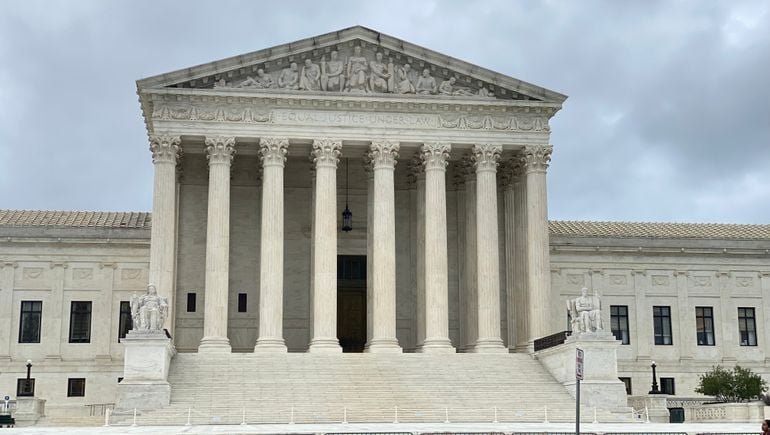While some have lambasted the U.S. Supreme Court’s recent ruling about a Washington state concrete truck driver labor dispute, legal experts told Construction Dive that the impact of that ruling would be limited.
In an 8-1 decision announced June 1, the Supreme Court sided with Glacier Northwest, declaring the Seattle-based concrete provider did have a case in state court against the International Brotherhood of Teamsters Local 174.
The lawsuit revolves around a work stoppage in 2017 in which at least 16 concrete drivers returned to Glacier facilities with fully loaded concrete trucks after the union called for a strike. The company took emergency measures to protect the vehicles, but the concrete mix was ruined, according to Glacier.
When the company sued the union in December 2017, a Washington state court threw out the suit, ruling it should be decided by the National Labor Relations Board. The Supreme Court reversed that decision.
What’s next
The original case will return to Washington state court, experts confirmed for Construction Dive, and Glacier hasn’t been awarded any damages for the union’s actions.
“Now, the National Labor Relations Act will not stand in the way of the state court suit for damages against the union, as the Washington state courts had held in the past,” said Andrew MacDonald, co-chair of the Labor Management Relations Practice at Philadelphia-based law firm Fox Rothschild. “The employer will now need to prove its case of intentional property destruction against the union, as any parties would do in a case involving damage to property.”
Dan Rosenberg, principal at Chicago-based law firm Much Shelist, emphasized the lawsuit isn’t decided: Glacier Northwest must still prove its case in the state court, as the high court’s ruling didn’t declare the Teamsters had to pay.
MacDonald advised construction employers to keep an eye on the Washington court, as it could ultimately allow a “limited avenue” to pursue damages against unions for property damage, something which would likely have been unavailable in the past.
He noted that construction employers are more likely to face actions that could result in property damage than other employers facing labor disputes.
Impact on labor relations
Nevertheless, the lawyers don’t see this as a time for unions to raise alarm bells. Though some, like Teamsters General President Sean O’Brien, decried the decision, experts said the impact is likely to be minimal.
“The Supreme Court’s decision is limited to intentional property destruction,” MacDonald said. “Most strikes or other protected activity do not involve intentional property destruction, although it does happen more often in the construction industry than other sectors of the economy.”
Additionally, he said, the court allowed unions to stop work at inopportune times in order to cause economic loss, so long as they take “reasonable precautions” to protect property.
Rosenberg said that “the Teamsters took a pretty extreme action,” and the suit resulted from that extreme action.
“As the case rightly points out, there has never been an unlimited right to sue,” Rosenberg said. “So bottom line, to me, this is a middle-of-the-road decision that seems completely reasonable and rational.”
It’s worth noting, Rosenberg said, that the 8-1 majority meant that “the decision was joined by two of the three ‘left-leaning’ justices.”
Neither MacDonald nor Rosenberg believed that the right to strike itself was endangered by the ruling.
On the other hand, Mark Erlich, fellow at Harvard’s Center for Labor and a Just Economy, acknowledged that strikes remain rare in U.S. labor relations — they’re often a last resort when negotiations break down. Nonetheless, he believed the decision would have a “chilling effect” for unions weighing a work stoppage.
“The very premise of a strike, i.e., to impact an employer by withholding labor, is to inflict economic harm,” Erlich said. “While some argue that the Glacier ruling is fact-specific, this decision is one more indication of the court’s majority’s anti-labor animus.”


